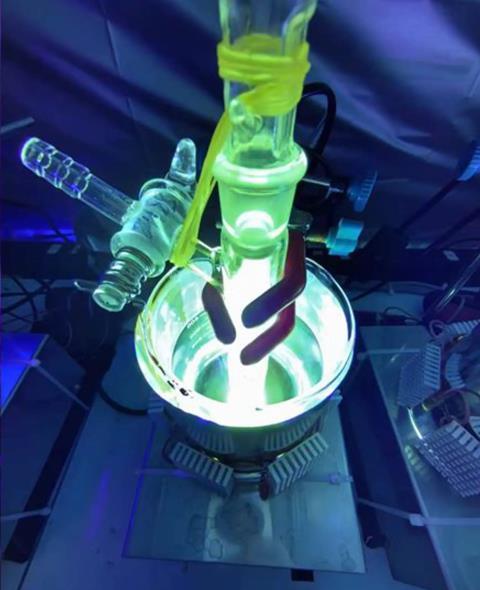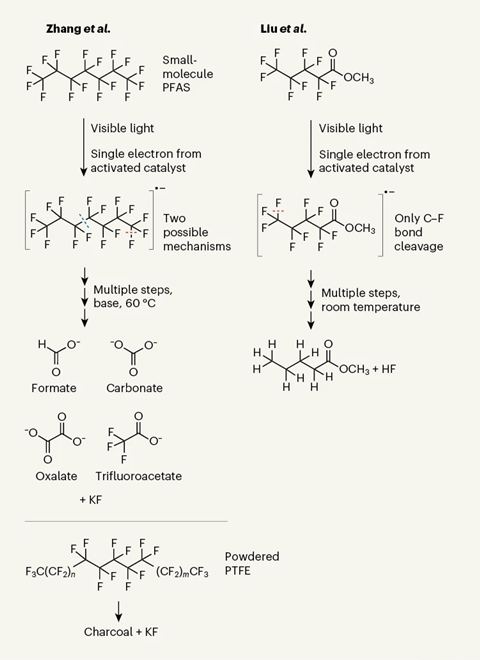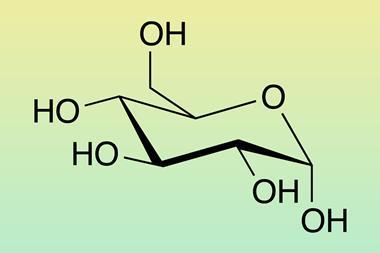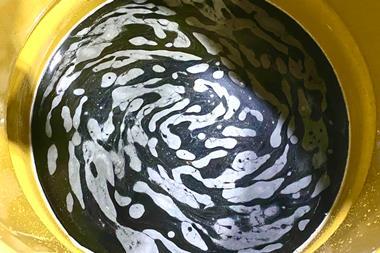Chemists in China and the US have discovered catalysts enabling light-driven reactions that can break down fluorine-containing chemicals that are attracting concern as pollutants. Two research groups separately harnessed a powerful new class of carbon-based catalysts that help break bonds between carbon and fluorine atoms, avoiding using and producing other harmful chemicals. ‘Our approach can remove almost all the fluorine,’ says Yan-Biao Kang from University of Science and Technology of China (USTC) in Hefei.

The world knows per- and polyfluoroalkyl substances (PFAS) better as ‘forever chemicals’. They include materials such as polytetrafluoroethylene (PTFE), commonly known as Teflon. PFAS contain many fluorine atoms, which prevent other substances from readily reacting or interacting with them. That’s useful in making pans non-stick and coats waterproof, but means the substances linger, polluting the environment.
Worse still, chemicals like perfluorooctanoic acid (PFOA) and perfluorooctane sulfonate (PFOS) are linked to health concerns in people. PFAS’s stability has also made disposal a challenge. PTFE can’t be recycled, and defluorinating it can require temperatures above 500°C, or difficult-to-handle chemicals such as ammonia and alkali or alkali-earth metals.
Bright ideas
That made PFAS an appealing challenge for new ‘organic photoredox catalysts’, explains Garret Miyake from Colorado State University, US. Designing such catalysts, which harvest light to perform reduction and oxidation reactions, is ‘a maturing field’, Miyake adds. As his team made more powerful catalysts, they looked at breaking carbon–fluorine bonds, ‘which are some of the strongest bonds that are made in chemistry’.

Kang explains that redox photocatalysts absorb visible light, causing electrons within their structure to gain energy. The higher-energy electrons can transfer to other molecules to do reduction reactions. Usually these are based on precious metals like ruthenium or iridium.
The USTC team discovered a twisted carbon-based organic molecule containing interconnected aromatic rings that was a very strong reduction photocatalyst, called KQGZ.1 The researchers first tested it on a fluorobenzene molecule. ‘Interestingly, the PTFE coated stirring bars turned to black after these reactions,’ Kang explains. ‘This finding encouraged us to explore whether the defluorination of PTFE is possible.’
Breaking the unbreakable
In purple LED light, the catalyst became a bright yellow-green colour, showing an electron had been excited to a high-energy state. It injects an electron into a carbon–fluorine bond, Kang says, making that bond unstable, and leading to it breaking. ‘This process will continue until [it removes] almost all the fluorine atoms,’ Kang tells Chemistry World. As well as PTFE, the approach defluorinated other PFAS including PFOA and PFOS.
Miyake and his colleagues, meanwhile, developed an organic photoredox catalyst system based on a flat molecule called BPI, also with interconnected aromatic rings.2 Their catalyst also changes colour when excited. It could break down PFAS including PFOA, but not PTFE, because it couldn’t dissolve in the reaction conditions they used. Miyake says that the way the USTC team’s catalyst can ‘break down Teflon is really impressive’.
Miyake’s teammate Niels Damrauer, from the University of Colorado, Boulder, stresses that a particularly important part of his team’s new paper is that it helps show how these catalysts work. Miyake adds that his team also shows that the catalyst can transform carbon–fluorine bonds to synthesise new molecules.
Jinyong Liu from the University of California, Riverside, calls the papers ‘perfect examples’ of how chemistry ‘can contribute to solving environmental challenges’. ‘In the past, people believed that only by providing high energy, such as low wavelength UV, could PFAS be effectively degraded,’ he explains. ‘Now, with just organic molecules as the catalyst and visible light as the energy source, the new photocatalytic system showed great performance that even the UV systems could not achieve.’
References
1 H Zhang et al, Nature, 2024, DOI: 10.1038/s41586-024-08179-1
2 X Liu et al, Nature, 2024, DOI: 10.1038/s41586-024-08327-7

















No comments yet